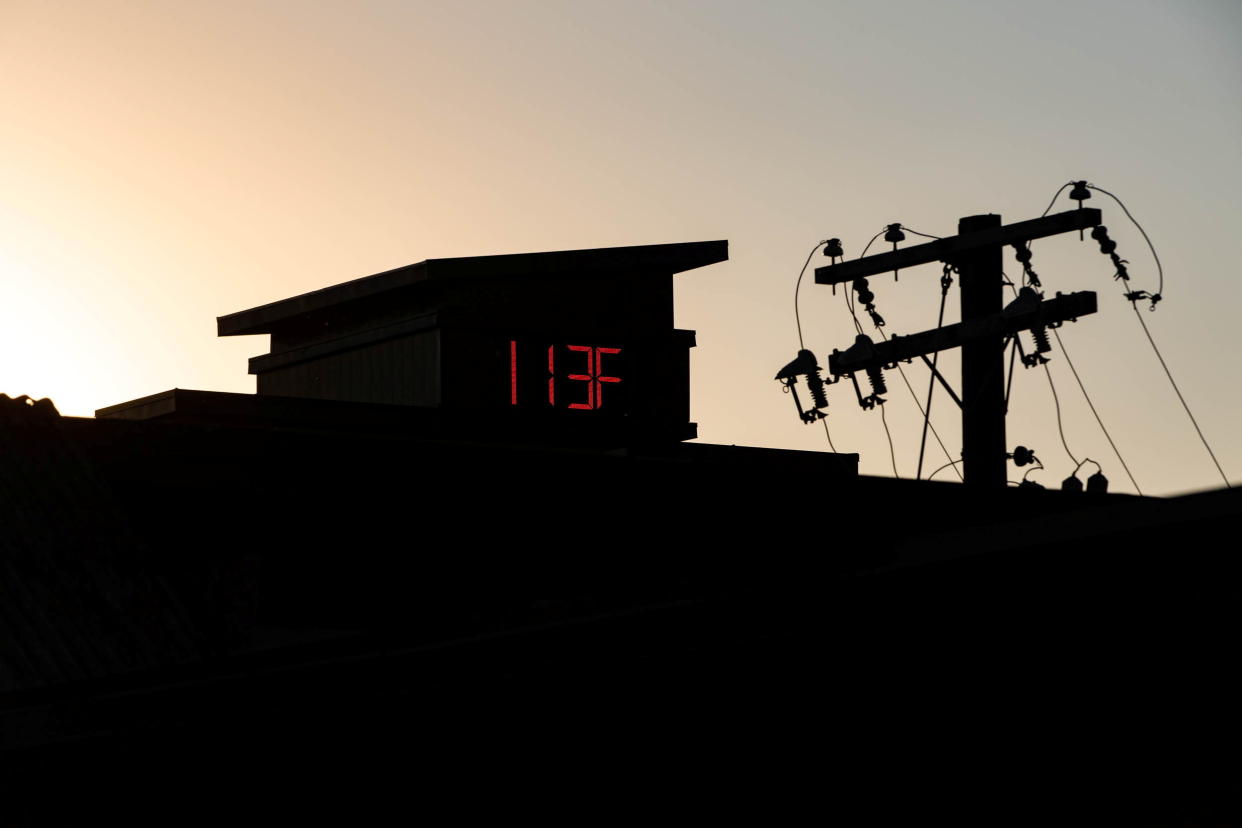Thanks to climate change, heat waves and record temperatures in the Pacific Northwest may become commonplace

Portland, Ore., was forecast to hit record 114 degrees Fahrenheit on Monday, shattering Sunday's all-time temperature record of 112 degrees, which surpassed Saturday's record of 107 degrees.
Seattle, Wash., also set a record on Sunday, reaching 104 degrees in a city where many people don't have air conditioning, while the Canadian town of Lytton, British Columbia, reached 116 degrees.
Described as a "once in a millennium" weather event, the heat dome that has gripped the Pacific Northwest is notable because such extreme temperatures are a rarity in the region. But thanks to climate change, they may not be so unusual in the years to come.
“Climate change is clearly increasing the severity and frequency of unprecedented extreme heat events globally," Daniel Swain, climate scientist at the University of California, Los Angeles, told Yahoo News. "That’s also specifically true in individual regions.”
While the causes of the heat dome weather phenomenon are complex — a ridge of high pressure descended on the Pacific Northwest, offshore winds drew in unusually dry air to the region from the high desert, etc. — the climate conditions that precipitated it have been trending steadily in one direction thanks to global warming.
“The mean warming in this region so far has been somewhere between two and four degrees Fahrenheit, so I think it’s fair to say that at a minimum climate change contributed at least that much to the severity of this heat wave," Swain said.

A growing consensus of climate scientists are pointing to what is unfolding across the drought-plagued West this spring and summer as an ominous sign of what is to come.
"This is consistent with what is being observed and projected as our climate continues to change," Erica Fleishman, director of the Oregon Climate Change Research Institute at Oregon State University, told the Oregonian newspaper. "It is becoming warmer during the summer and heat waves are more frequent, they are of greater magnitude and they are lasting longer."
While Portland, Seattle and other cities have had to set up cooling centers for residents without air conditioning, the current heat wave has been so severe that it has buckled roads in parts of Washington.
State Route 544 milepost 7 near Everson, Wa is currently closed. The asphalt roadway is buckling and unsafe for travel. WSDOT is advised and detours are currently being set up.
BL pic.twitter.com/5Yb9UYzbDc— Trooper Rocky Oliphant (@wspd7pio) June 28, 2021
"We know from evidence around the world that climate change is increasing the frequency, intensity and duration of heat waves," Kristie Ebi, professor at the Center for Health and the Global Environment at the University of Washington, told the Associated Press. "We're going to have to get used to this going forward."
A 2009 study conducted by the National Center for Atmospheric Research found that new record-setting high temperatures outpaced new record-low temperatures by a ratio of 2:1. Computer models have shown that that disparity will grow to 20:1 by 2050 and by 50:1 by 2100.
While a single temperature reading, or even a heat wave, is itself not indicative of climate change, the upward shift in temperatures is explained by the increase of greenhouse gasses being pumped into the atmosphere each and every year since the start of the industrial age. Average global temperatures have risen by 1.1 degrees Celsius, according to the United Nations Intergovernmental Panel on Climate Change, and are fast approaching the 1.5 degree-threshold beyond which most climate scientists warn the harsh consequences of global warming will be unavoidable.
The increase in average temperatures, in turn, has been felt in a pattern of regularly occurring extreme weather events like the heat dome over the Pacific Northwest.
Different people learn different ways but for me personally I didn’t really “get” climate change until I read charts like this — even modest shifts in the average lead to huge increases in the frequency of rare extreme heat events. pic.twitter.com/DeupIw81IF
— Matthew Yglesias (@mattyglesias) June 28, 2021
While Swain cautions that causes of the the current heat dome over the Pacific Northwest need to be studied, he has little doubt that climate change is a contributing factor.
“The science has really advanced a lot in the last five to eight years. Scientists who even a decade ago were very uncomfortable with linking specific weather events to climate change now do so on a regular basis. That’s how science works — things change, things evolve,” Swain said, adding, “The signal is stronger now than it was a decade or two ago. The scientific tools we have to test those hypotheses have improved, the models are better.”
With evidence continuing to mount that humanity is fast-approaching a tipping point, events like the latest heat wave are sounding what feels like never-ending alarm bells.
"If our decision makers do not take this heat wave as a harbinger of things to come and act quickly to adopt the climate change policies we all know are needed, I fear for the future of humanity," Jean Flemma, director of Oceans Defense Initiative, told Axios.
____
Read more from Yahoo News:


